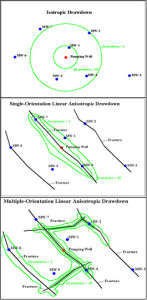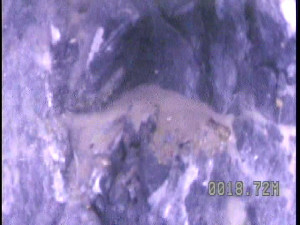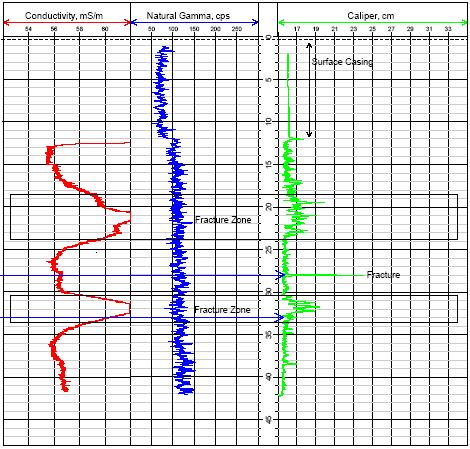Challenge
Mundell completed a highly detailed structural analysis fractured bedrock beneath an active industrial facility near the south coast of Ireland. The chemical methyl tert butyl ether (MTBE) was discovered at the Site in various concentrations in the surface water, shallow groundwater, and groundwater residing within fractured bedrock. Because the subsurface movement of chemicals is controlled by the ease of flow through available subsurface pathways, the primary objective was to evaluate the groundwater flow pathways through the subsurface so that recommendations could be made for a site-wide groundwater monitoring system and remedial strategy.
Action
The Site subsurface conditions were complex: a nearly vertically-inclined, highly-fractured, grey mudstone and shale bedrock of lower Carboniferous age buried beneath a varying mantle of human-placed fill, glacial till (boulder clay), and glaciofluvial deposits in low-lying areas within stream valleys. The top of bedrock and significant fracture zones were initially mapped utilizing a combination of two-dimensional resistivity profiling, VLF, and seismic refraction with GRM analysis. However a detailed understanding of the fracture system in the bedrock aquifer was essential to managing and monitoring impacted groundwater at the Site. It was important that monitoring wells be located within fracture zones in order to accurately reflect groundwater impacts to the aquifer. In addition, the production yields and capture zones of groundwater recovery wells will be optimized when located in multiple, inter-connected fracture systems (see illustration to the right).
Site-specific information was lacking regarding the nature of the intact rock, detailed lithologic distributions, characteristics of fractures (spacing, orientations, aperture widths, fillings, etc.), and visualization of groundwater flows. Video logging provided an excellent visual record of the physical appearance of the rock, fractures, and in some cases even the real-time groundwater flow dynamics. The color video camera used for this project has the ability to view downwards or to the side. The operator has control of the choice of views, down or side, view rotation speed and direction, and the up or down movement of the camera. The geophysical logging consisted of natural gamma ray, electromagnetic inductive conductivity, and three-arm caliper. These three probes provided information pertaining to lithology (primary gamma), porosity (primarily conductivity), and physical strength of the rock, and thus fracturing by implication (primarily caliper).
Example interpreted geophysical log with video still frame showing large fracture. Groundwater could be seen flowing into the well through this fracture and depositing the sand seen in the image (light brown material near the center of the photo).






